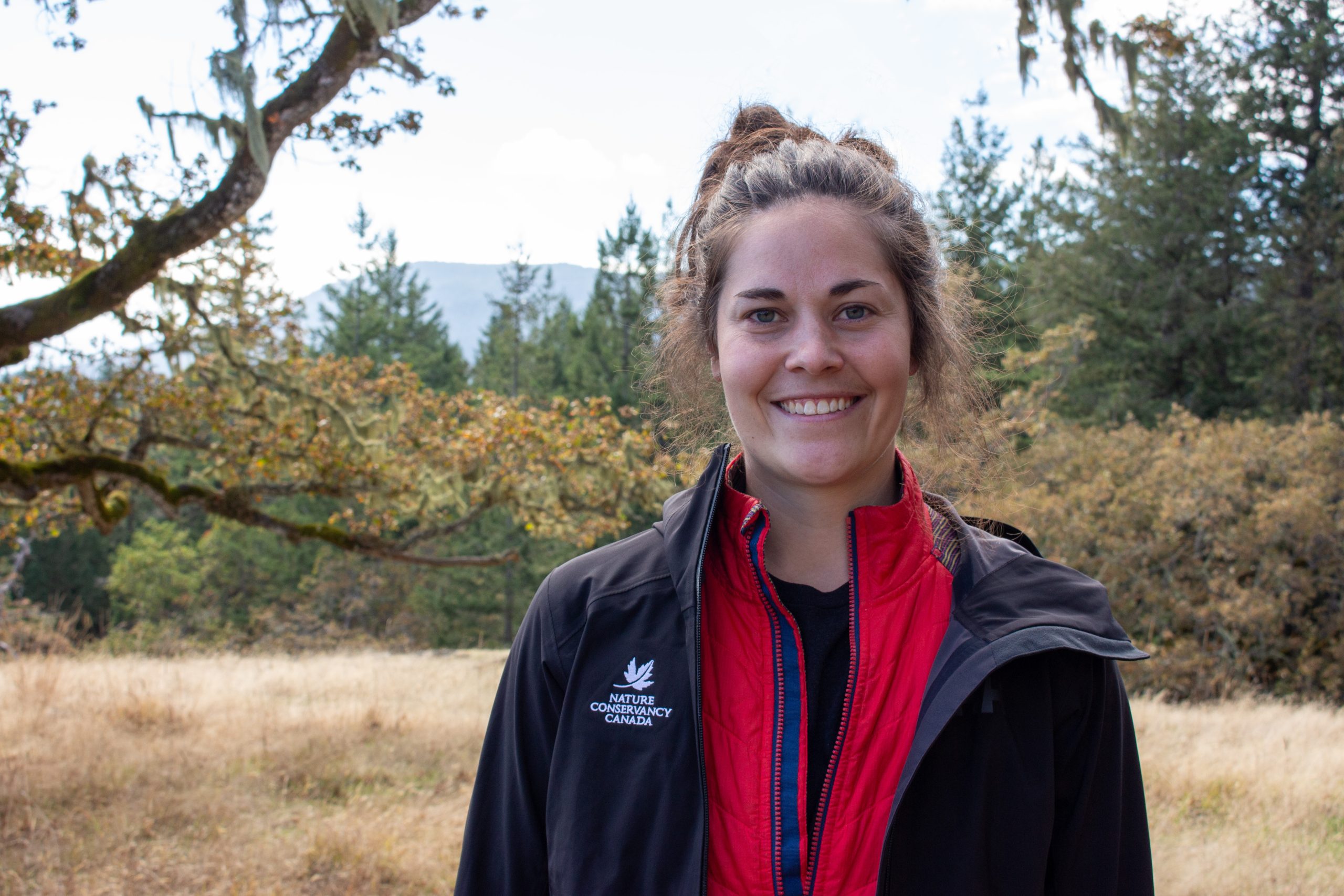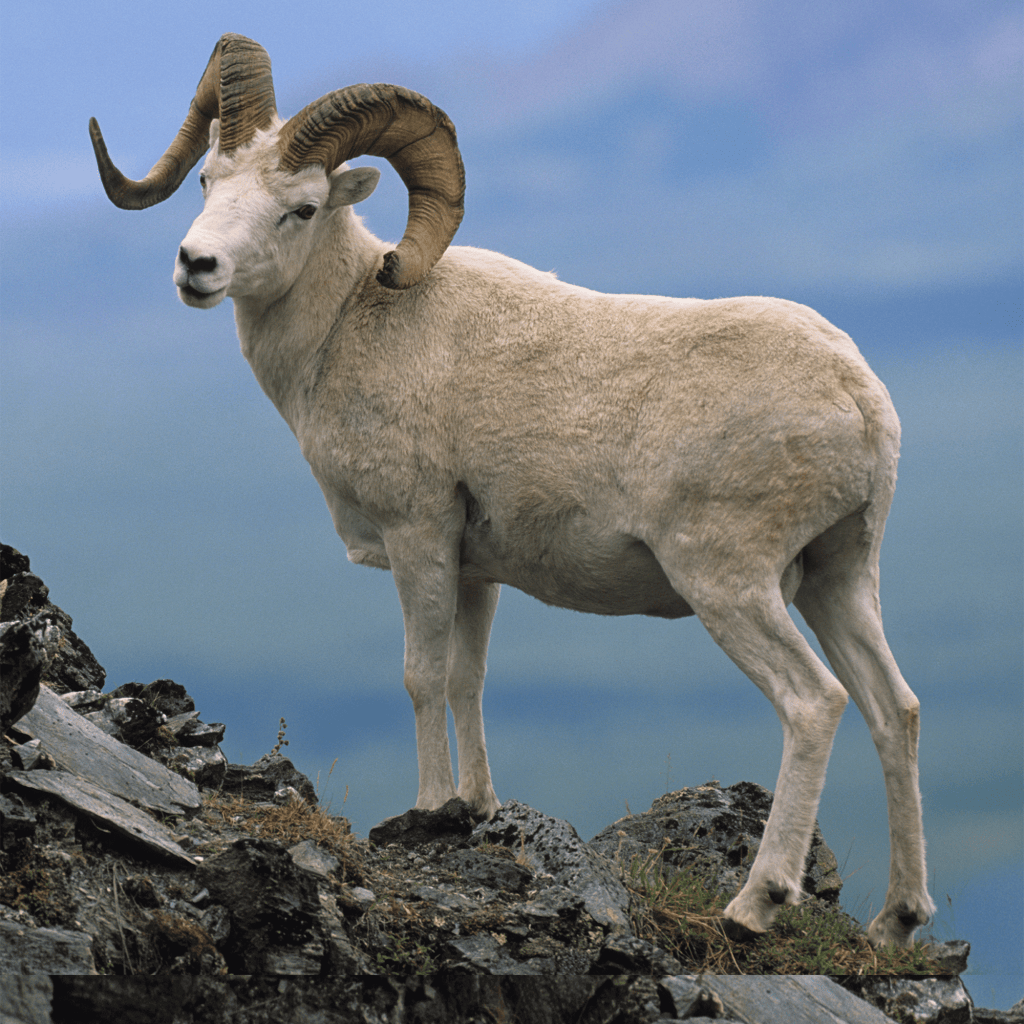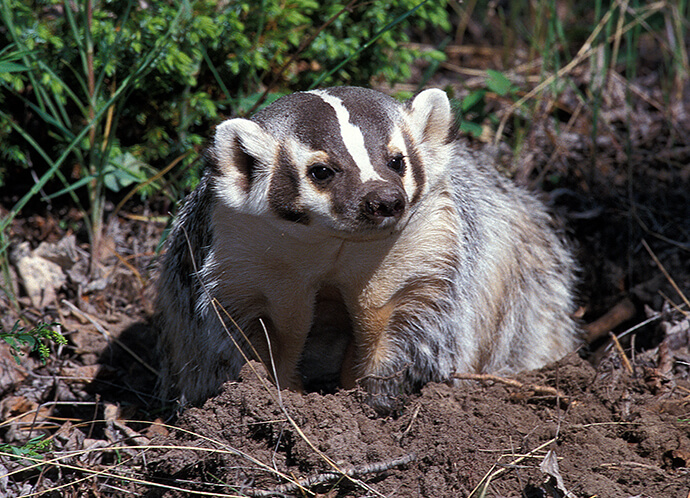
| Save the grizzly bear, American badger, and bighorn sheep! Hi, I’m Julia Poetschke and I’m a Land Stewardship Manager with the Nature Conservancy of Canada (or NCC for short!). I’m working with a team of super- smart, super dedicated scientists and conservationists in the Rocky Mountain Trench, in British Columbia. The trench is a wildlife corridor that’s home to all kinds of animals, including grizzly bears, American badgers, and bighorn sheep! Grizzly bears can be brown to nearly black, with silvery-white longer hairs throughout their fur, giving them a “grizzled” (gray-streaked) look. They live near rivers and streams and make their homes in dens on steep slopes, where they hibernate through the winter. Grizzly bears eat whatever food is available to them, including berries, grasses, and fish. Before they hibernate, they eat A LOT to build up fat and store up energy. During the months they’re hibernating, grizzly bears don’t even go to the bathroom — now that’s a deep sleep! American badgers live in forests and grasslands, and they’re related to both otters and weasels. But don’t let their cuddly appearance fool you: these ferret- family furballs are feisty foragers! Known as fossorial carnivores, American badgers are built to hunt underground prey. Their long snouts help them sniff out small rodents like voles and ground squirrels. The badgers’ front claws can grow up to 2 inches long! Their claws help them tear through the soil to reach their buried buffet. Bighorn sheep are iconic mountain mammals. |



They’re named for the male species’ distinctive spiral horns, which can weigh up to 30 pounds! Did you know that they can balance on cliff sides as narrow as only 2 inches and can jump up to 20 feet between mountain ledges?! Scaling mountains isn’t easy, but bighorn sheep are well adapted for this treacherous task. Their front hooves are bigger than their back hooves, and they have a hard outer rim and soft middle, providing traction that makes mountain climbing a breeze! Can you believe that these three animals, who are so different, all live in the same place? The Rocky Mountain Trench is an amazing geological formation – a long, deep valley that extends from Montana in the U.S. all the way to the top of British Columbia! It has a flat bottom and is surrounded by towering mountain ranges on both sides. The trench itself contains gorgeous forests, grasslands, and even wetlands, and is home to at least 29 endangered species.
It’s truly a sight to behold! Unfortunately, like many of Earth’s beautiful places, human activities and development are putting a strain
on the ecosystem. So, I’m working with a team at NCC to protect and restore it, focused on a treed grassland area by the Kootenay River. And this might sound crazy, but we’re doing it with: fire! Long ago, these treed grasslands regularly had natural, low-intensity wildfires that prevented them from filling in with dense trees. But when people moved into the area, they started to put out the fires as soon as they started. This caused the treed grasslands to transform into dense forest, which wasn’t so great for native species like badgers, elk, deer, and many others who relied on the grasslands for habitat and grazing. So, using safe and controlled fire, the team and I are restoring the treed grasslands to their former glory. But we need help! Check out the Adoptions section in the Earth Rangers App or visit the Earth Rangers Shop to get your Grizzly Bear, American Badger, or Bighorn Sheep Adoption Kits. Make a difference today!



I might adopt a big Horn sheep plush
I am going to be adopting the grizzly bear
Yay
I’m gonna adopt a grizzly bear. Plus I like salmon.
I don’t have money I wish I did
I love animals so I will help grizzly bears out especially if there’s a bonus fish stuffe.